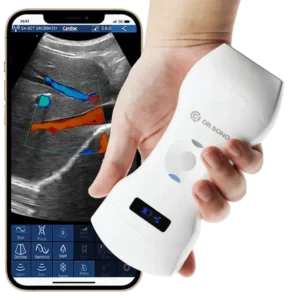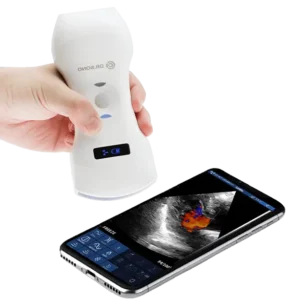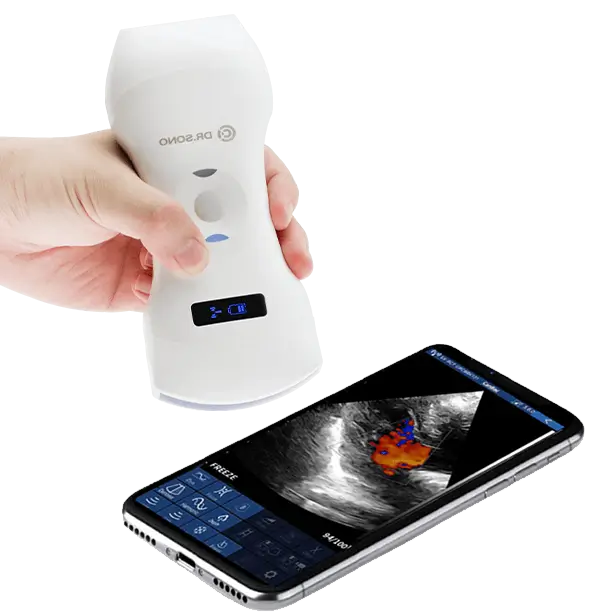How Much Does a Portable Ultrasound Machine Cost?
Updated: January 24, 2025

Portable ultrasound machines have become indispensable tools in modern healthcare, offering the flexibility to conduct diagnostic imaging anywhere. These devices cater to various medical specialties, including emergency rooms, rural clinics, sports medicine, and home healthcare.
Understanding the cost of portable ultrasound machines is vital whether you’re a healthcare provider exploring options or a clinic administrator managing budgets.
The cost varies widely due to factors like technology, brand, and intended use. This guide will break down everything you need to know about pricing, features, additional costs, and financing options to help you make an informed decision. Let’s see how much does a portable ultrasound machine cost.
Factors Affecting the Cost of Portable Ultrasound Machines
Several key factors determine the price of a portable ultrasound machine. Each aspect plays a critical role in aligning the machine’s performance with your medical needs.

1. Technology and Features
Advanced imaging features significantly impact the price. Here’s what to consider:
- Resolution: Higher resolution machines, capable of clearer and more detailed images, are more expensive.
- Frequency Options: Machines with variable frequencies allow flexibility for imaging at different depths, making them pricier.
- Imaging Modes: Doppler (for blood flow), 3D/4D imaging, and elastography (for tissue stiffness) are advanced modes that increase costs.
- AI Integration: Some machines now include artificial intelligence to assist with diagnostics, offering superior accuracy at a premium price.
- Wireless Connectivity: Bluetooth or Wi-Fi-enabled devices for seamless data sharing are often on the higher end of the spectrum.
2. Size and Portability
Portability is a major cost determinant. Options range from:
- Handheld Devices: Extremely compact and lightweight, these are the most portable and cost-effective but may lack advanced features.
- Laptop-Based Systems: Slightly larger, these systems strike a balance between portability and functionality, with added imaging modes and processing power.
- Cart-Based Portables: These include wheels for mobility but offer higher performance and durability, placing them in a higher price range.
3. Application and Specialty
The machine’s application directly influences its price:
- General Imaging: Basic systems suffice for routine diagnostic scans.
- Musculoskeletal Imaging: Requires machines with higher resolution and specific probes.
- Cardiovascular Applications: Machines must include advanced Doppler capabilities to visualize blood flow.
- Obstetric and Gynecological Use: Systems with 3D/4D imaging are ideal for fetal imaging but cost significantly more.
- Abdominal Scanning: Standard features usually suffice unless fine tissue detail is required.
4. Brand and Manufacturer
The brand matters significantly in cost and quality.
- Premium Brands: Dr. Sono Tri Scan Max, GE Healthcare, Philips, and Siemens are well-known for reliability and innovation, often costing more.
- Mid-Tier Options: Brands like Linear Pro, Convex Pro, Mindray and SonoScape offer competitive pricing while maintaining reasonable quality.
- Budget Brands: Cheaper systems from lesser-known brands might lack robust customer support or advanced features but can serve basic needs.
5. Warranty and Support
Machines with extended warranties or comprehensive customer support packages tend to cost more upfront. These warranties cover:
- Parts Replacement
- Technical Support
- Periodic Maintenance
Investing in robust support can reduce long-term operating costs, ensuring uninterrupted service.

Pricing Ranges for Portable Ultrasound Machines
1. Low-End ($10,000 – $25,000)
These machines cater to point-of-care diagnostics or basic imaging needs. They are typically handheld or small systems with limited imaging modes (grayscale only).
Examples include entry-level devices suitable for fieldwork or initial training.
2. Mid-Range ($35,000 – $45,000)
This range includes laptop-based systems offering color Doppler, better resolution, and multiple imaging modes. These machines are suitable for primary care, musculoskeletal imaging, or veterinary applications.
3. High-End ($50,000 – $70,000)
High-resolution imaging, Doppler capabilities, and versatile probes make these systems ideal for specialized applications like cardiology or obstetrics. They often feature touchscreen interfaces and wireless connectivity.
4. Premium (Over $70,000)
These machines cater to high-volume hospitals and specialty clinics. Features include cutting-edge imaging technologies like 4D imaging, elastography, and AI diagnostics. They often come with enhanced durability and extended support plans.

Comparison of Portable Ultrasound Machine Prices
1. Manufacturer Comparison
- Dr. Sono: Gives crystal-clear high-quality imaging with multiple imaging modes at highly reasonable and mid-range costs. Dr. Sono products don’t need subscription or membership fees.
- GE Healthcare: Offers some of the most reliable and versatile machines but at a premium cost.
- Philips Lumify: Known for compact designs and cloud storage integration, falling in the mid-to-high range.
- SonoSite: Focused on rugged portability, ideal for fieldwork but often on the expensive side.
- Mindray: Provides excellent value with feature-rich systems at mid-range prices.
2. Model and Feature Comparison
- Handheld Ultrasounds: Priced under $5,000, great for bedside or field diagnostics.
- Laptop-Based Systems: Mid-range options with high resolution, multi-probe compatibility, and more durable designs.
- Advanced Machines: Over $15,000, offering specialized imaging and long-term value for hospitals and specialized practices.
3. Price-Performance Ratio
Value for money often lies in mid-range machines, offering good imaging quality and reliability without the high costs of premium systems. Evaluate your specific needs to avoid overpaying for unnecessary features.

Additional Costs and Considerations
1. Probes and Transducers
Probes are essential components of ultrasound machines, used to capture sound waves and generate images. The type of probe needed depends on the application:
- Basic Probes: These include linear, convex, or phased array probes, used for general imaging tasks like abdominal or vascular scans. They typically range from $500 to $2,000.
- Specialized Probes: Endocavitary probes for internal imaging, such as gynecological or rectal exams, and transesophageal echocardiography (TEE) probes for cardiac imaging, are $3,000 to $5,000 due to their precision and complexity.
- Multiple Probes: Different clinical scenarios may require multiple probes, significantly increasing the total cost of the device.
- Replacement Costs: Probes are delicate, and mishandling or wear-and-tear can lead to replacements costing thousands of dollars.
2. Software Upgrades
Modern ultrasound machines often include sophisticated software for image processing, data analysis, and integration with healthcare systems. These upgrades ensure the machine stays relevant and compliant with evolving technology:
- Annual Costs: Basic software updates for system stability and minor enhancements can cost $1,000 or more per year.
- Advanced Software Features: Updates enabling AI-based diagnostics, elastography, or cloud storage integration can carry a higher price tag.
- Importance: Regular updates not only enhance imaging capabilities but also ensure compliance with regulatory standards and interoperability with hospital systems.
3. Maintenance and Repair
Maintenance and repair are critical to keeping the ultrasound machine operational:
- Annual Maintenance Costs: Preventive servicing ranges from $500 to $1,500 annually, depending on the machine’s complexity.
- Repair Costs: Unexpected repairs, especially for high-end machines, can cost $10,000 or more, particularly for fixing image-processing boards or display screens.
- Service Contracts: Many manufacturers offer extended service plans for an additional cost, which can save money in the long run by covering expensive repairs.
- Long-Term Value: Neglecting maintenance may lead to costly downtime, impacting patient care and clinic revenue.
4. Training and Certification
Effective use of ultrasound machines requires operator training, especially for systems with advanced capabilities:
- Basic Training: Introduction sessions on system operation and maintenance range from $500 to $1,000.
- Specialized Courses: Advanced imaging techniques like Doppler or 4D imaging often require more in-depth training, costing $1,000 to $2,000 per course.
- Ongoing Education: As technology evolves, clinicians may need to pursue periodic certifications to stay updated on best practices and new features.
- Cost Justification: Investing in training ensures optimal use of the machine, reducing errors and maximizing the machine’s diagnostic potential.
5. Regulatory Compliance
Healthcare standards mandate that medical devices meet certain safety and performance criteria:
- Certification Costs: Machines imported or sold in regions like the US or EU need to comply with standards like FDA (Food and Drug Administration) or CE (Conformité Européenne). These certifications can cost $1,000 to $5,000, depending on the region and complexity of documentation.
- Regular Inspections: In some jurisdictions, compliance involves regular machine inspections, adding to operational costs.
- Significance: Compliance ensures patient safety, legal operation, and credibility of the healthcare practice using the device.

Financing and Leasing Options
1. Overview of Options
For practices or clinics with tight budgets, financing and leasing options offer alternatives to outright purchase:
- Financing: Involves borrowing money to buy the machine and repaying the amount over time in installments.
- Leasing: This entails renting the machine for a set term, with the option to upgrade or return it at the end of the lease.
2. Pros and Cons
- Financing:
- Pros:
- Ownership of the machine after full payment.
- Flexible terms allow customization of monthly payments based on budget.
- Cons:
- Includes interest rates, increasing the overall cost.
- Responsibility for maintenance and repair costs post-purchase.
- Pros:
- Leasing:
- Pros:
- Lower upfront costs, as the clinic doesn’t need to pay the full purchase price immediately.
- Maintenance and repair are often included in the agreement.
- Easier upgrades to newer technology at the end of the lease.
- Cons:
- Does not lead to ownership; long-term costs may exceed the purchase price.
- Usage restrictions may apply as per the lease agreement.
- Pros:
3. Examples of Plans
- Financing: Monthly payments can be as low as $300/month for basic models, scaling higher for advanced systems.
- Leasing: Agreements start at $400/month, with add-ons like included servicing or replacement options.

Key Takeaways
- Portable ultrasound machines range from $5,000 to over $30,000 depending on features, application, and brand.
- Additional costs like probes, maintenance, and training must be factored into the total expense.
- Financing or leasing can be effective solutions for budget-conscious buyers.
Final Thoughts
Investing in the right portable ultrasound machine is not just about the upfront cost—it’s about balancing your clinical needs with long-term value. Carefully compare options and consider total ownership costs to make a sound investment.

Article by
Scott Caswell
Scott is a co-founder of PUM and an ultrasound technology expert with a passion for innovation in the medical field. Scott has dedicated his career to advancing portable ultrasound devices, making medical imaging more accessible to professionals around the globe.
When not refining ultrasound devices, he enjoys hiking, experimenting with new recipes, and exploring the latest tech gadgets. Scott is dedicated to making healthcare more accessible and efficient through cutting-edge ultrasound solutions.
Join Our Mailing List & Save!
Enter your email address below to receive exclusive promotions and discounts along with additional product information and tips
Shop Now






Leave a Reply